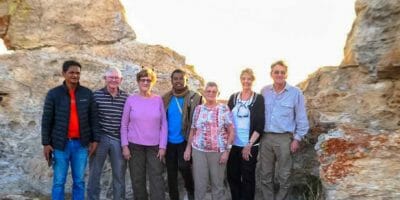The 7e edition of the International Tourism Fair (ITM) Madagascar brought together 200 exhibitors from May 31 to June 3 in Antananarivo, welcoming around 90 invited foreign travel agents and tour operators. The opportunity to take stock of the evolution of tourism in the Big Island for the French market.
What weight does French tourism represent?
In 2016, Malagasy tourism returned to growth for the first time since 2009, with 293,000 arrivals, a record growth of 20%. The main market for the Big Island – it represents around half of the tourists (60% if we include the Reunionese) – the French market has also recorded a recovery: 135,000 arrivals were recorded in 2016, while they were dropped to 60 000 in 2009.
But the decline in the destination in 2017 due to disaffection due to a plague epidemic (257,000 tourists, a drop of 12%) suggests a decline in the French market, even if the statistics by nationality are not yet available. established. “It’s off to a good start but we have not yet returned to the levels of 2008 with 180 000 French tourists”notes Vola Raveloson, executive director of the Madagascar National Tourism Office (ONTM). “We still have room for improvement in this market which remains a priority.”
How do they travel?
The French clientele in Madagascar is mainly made up of seniors, pre-retirees and retirees. “This particularity is linked to the fact that it takes time to discover such a large country”explains Vola Raveloson. This is why the French generally opt for circuits of 17 to 21 days with 3 or 4 days of seaside stays at the end, for an average budget of 2 500 to 3 000 euros.
“We are also seeing more and more requests for honeymoon trips, but again on a circuit!”adds Vola Raveloson. In Nosy Bé, a seaside destination par excellence, the French clientele is the 2e with 17,000 tourists behind the Italian clientele (24,000 tourists).
To relaunch the French market, since 2016 the National Tourist Office of Madagascar has launched a strategy to promote themes linked to niche markets such as hiking, trekking or water sports, which in the long term should also make it possible to rejuvenate the clientele.
What trends for 2018?
They are difficult to determine due to the uncertainty linked to the current pre-electoral political context. But regardless of this factor, the development is favorable. Investments in the tourism sector are exploding (322 opening authorizations in 2017, and a 300% growth in the volume of investments) particularly in the high end, and air connections are strengthening with France in particular.
In this regard, the strategic partnership established this fall between Air Austral and Air Madagascar should play a decisive role in boosting the French market. This summer, capacity between France and Antananarivo on Air Madagascar is increasing by 53% with 4 flights departing from Paris and one flight departing from Marseille, not counting the possibilities of coupling flights with those of Air Austral via Reunion Island. or Mayotte.
And to this, we must add the breath of fresh air that will soon be brought into service by the entry into service of Tsaradia, the domestic airline, which has just received its IATA code. In addition to strengthening regional connections with neighboring islands, the creation of this subsidiary aims to increase and improve the quality of domestic flights, the fluctuations of which often forced tour operators to concentrate on seaside stays in Nosy Bé rather than on circuits.
From this summer, thanks to a fleet of 4 ATRs and 2 Twin Otters (soon 3), a second daily flight will be set up for Nosy Bé, Diego Suarez, Tamatave and Fort Dauphin from Antananarivo. And from winter, a daily flight will be provided to Sainte Marie, Sambava, Majunga, Morondava and Maroantsetra.
“In total, 83% additional capacity will be put in place on the domestic market”underlined Joseph Marie Malé, general manager of Air Austral during the first day of the ITM, also specifying that the joint loyalty program between the different companies would be launched in January 2019.











